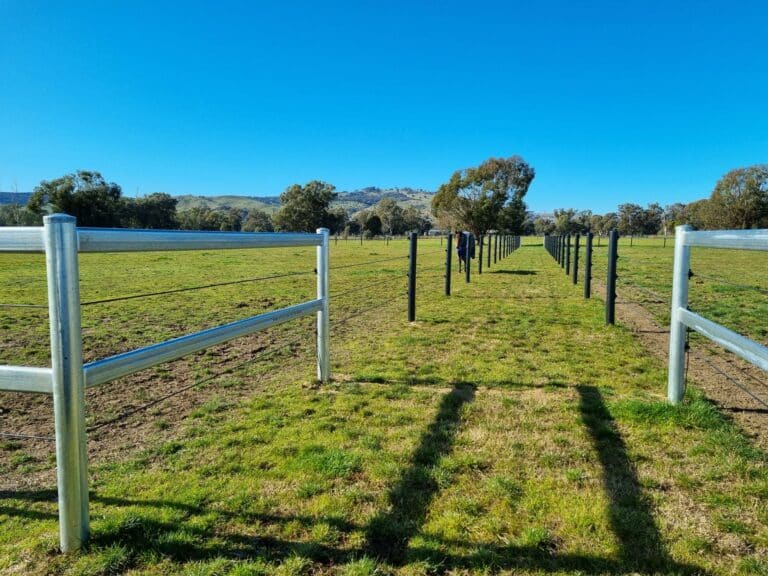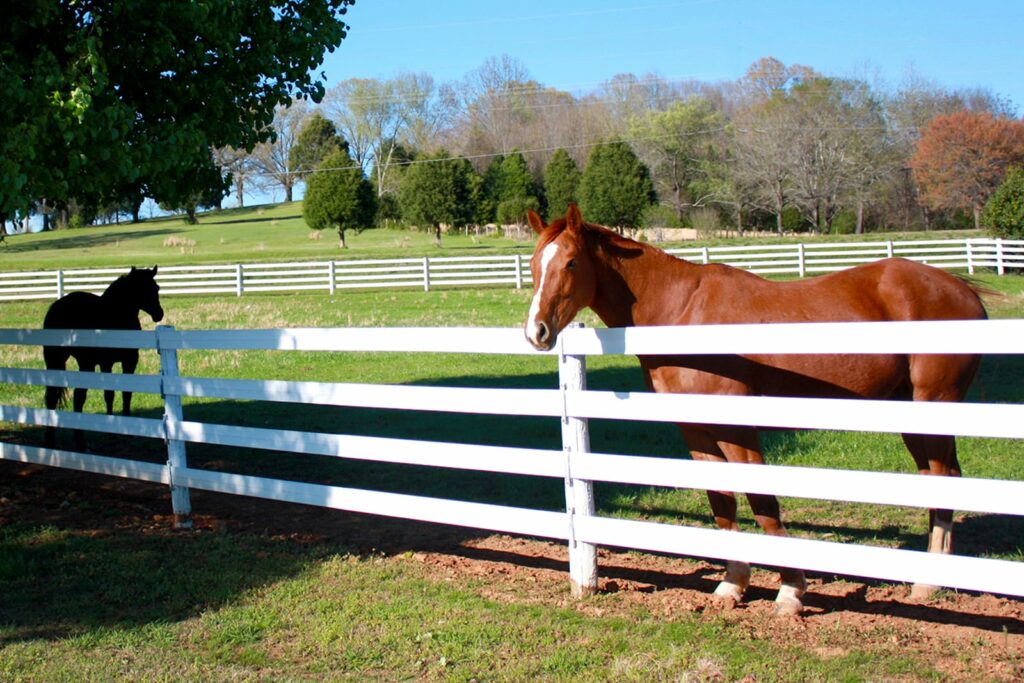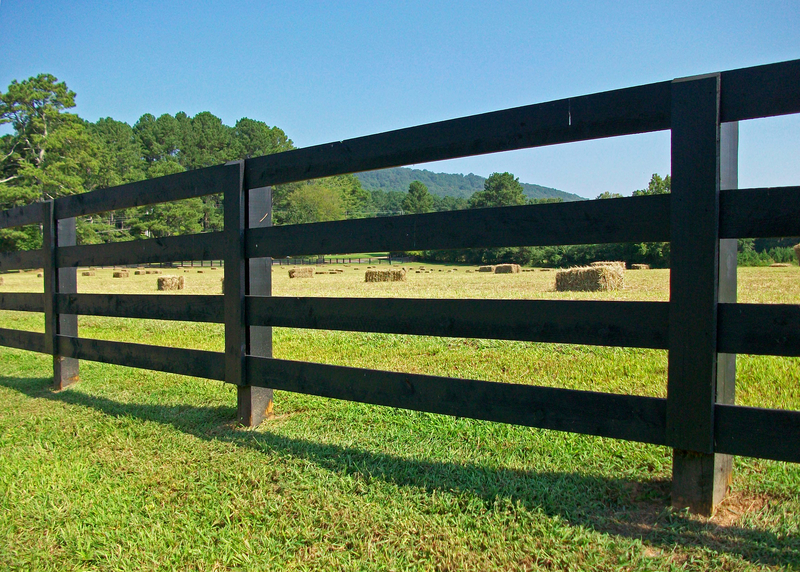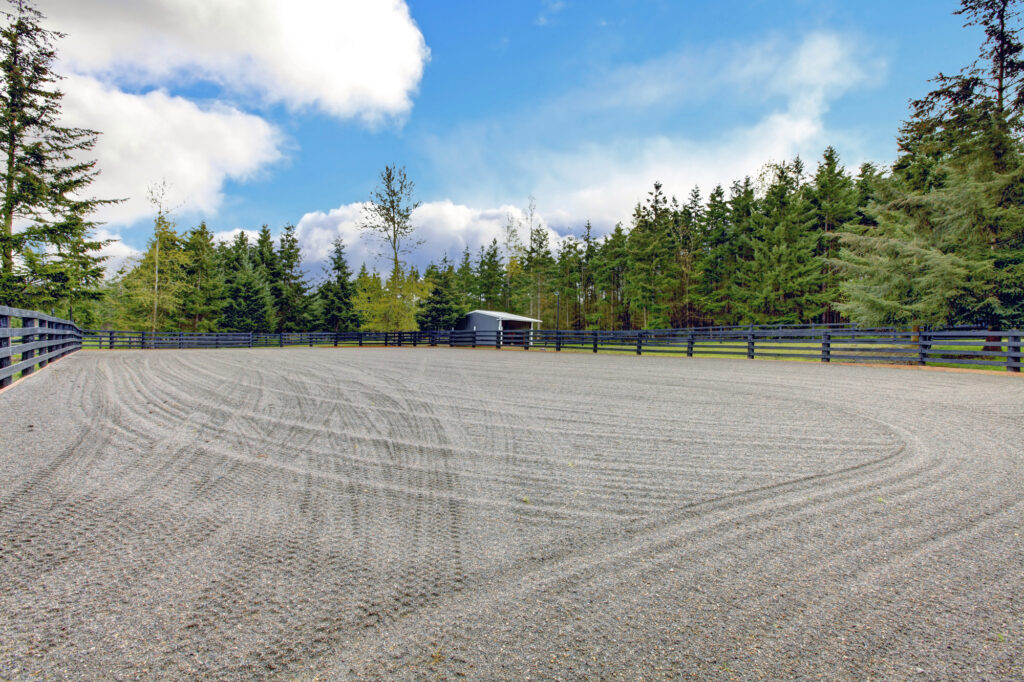Stock & Noble
The Role of Strainer Posts in Safe and Effective Horserail Fences

- BY Tripti Kakkar
Horserail is one of the safest and most widely used horse fencing in the world. If you are considering buying the original Horserail or have already bought then this article will help you with the next step of creating a secure fence line.
One of the most critical aspects of well-functioning Horserail fencing is strainer posts, also called end or corner assemblies. Horserail is a tensionable rail system and when it comes to enclosing a paddock with a Horserail fence, strainer posts play a crucial role in ensuring the stability and safety of the entire system.
As paddocks often feature curves, corners, and ends either side of the gateway, it is important to install strainer posts at these points. Acting as anchor points, these assemblies securely connect the rails, preventing sagging or disconnection. They play a vital role in maintaining the stability of the fence by preventing tension from pulling the posts over.
Thus, to build a safe and effective Horserail fence it’s important to understand the function of strainer posts. At Stock & Noble, we provide the finest fencing solutions to high-end properties across Australia and New Zealand. Horserail is one of our highest-selling fencing systems, especially loved by horse owners. We have years of experience in helping our clients with the effective and correct installation of Horserail using strainer posts.
Based on our knowledge and expertise, in this blog post, we will explore the importance of strainer posts, discuss their key components, and provide essential considerations for incorporating them into your Horserail fence assembly.
Understanding the significance of strainer posts will help you create a secure, durable and beautiful fence that meets your needs and expectations.
Importance of a Strainer Post or an End Assembly
Ensuring Safety
The primary priority when dealing with animals is safety. To create a safe environment, the Horserail system needs to be tight and secure. End and corner assemblies provide anchor points that connect the rails, allowing them to remain connected and maintain tension. Without these assemblies, the tension in the rails could pull the posts over, compromising the safety of the fence.
Aesthetic Appeal
In addition to safety, the appearance of the fence is a significant consideration for both us and our customers. Straight and flat rails give the fence a traditional post and rail appearance, unlike systems like Bounce Back, which have minimal tension and tend to flop over between the posts, resulting in an inferior look. End and corner assemblies play a crucial role in achieving a visually appealing, well-maintained fence that enhances the overall aesthetics of the paddock, as well as your property.
Key Components of Strainer Posts – End and Corner Assemblies
End Assembly
An end assembly from Stock and Noble consists of two steel posts and two or more horizontal steel rails. Once the posts are installed, the rails are welded on-site. Caps are then placed on top of the posts.
Depending on the number of rails the client wants to attach, additional components such as end buckles or rail brackets can be attached to the end assembly. The selection of additional components depends on the type of fencing being attached.
Corner Assembly
A corner assembly is similar to the end assembly, but it requires three posts arranged in a triangular shape. Each section of the corner assembly accommodates two rails, resulting in a total of four steel rails.
Customers have the flexibility to attach 1, 2, 3, or 4 rails to the assembly, depending on their specific requirements.
Important Considerations While Choosing a Strainer Post for Horserail
Consistent Fencing Look Achieved by a Strainer Post
Some customers prefer to maintain a consistent look throughout their fence by choosing strainer posts made of steel that match the dimensions of their fence posts.
For example, if their line posts are Hogan fence posts, which measure 120mm, they may opt for similar-looking or similarly-sized end and corner assemblies in steel. This choice ensures a cohesive appearance across the entire fence.
Post Dimensions of a Strainer Post
Some clients opt for smaller dimension square steel posts, such as the 75×75 SHS (Square Hollow Section), primarily due to cost considerations.
However, it is essential to keep in mind the rule of thumb for strainer posts: if you want a 1.5-meter post sticking out of the ground, it should be buried at least 1.5 meters below the ground. If you plan to ram the post into the ground you will require longer posts to accommodate this.
Alternatively, shorter strainer posts can be used by anchoring them with concrete for added strength and stability. Some contractors bury 800mm to a meter of the post in this manner. While shorter posts may be more cost effective, they do require additional expenditure on concrete. From a cost perspective, this approach may not be as advantageous, but for those without access to a post rammer, simply digging a hole, pouring concrete, and placing the post can be a feasible option.
We recommend using a post rammer whenever possible, as burying steel and concrete in the ground can lead to rust over time. By ramming the strainer post, you ensure a secure and long-lasting foundation for your Horserail fence, minimizing the risk of rust and maintaining its structural integrity.
Impact of Extreme Cold Weather on a Strainer Post
The Horserail system includes three high-tensile wires within each rail. In extreme cold or varying weather conditions, such as those experienced in Australia, the rail can contract.
This can cause the rails to become overly tight and consequently increase the pressure on the strainer posts. So, while the fence may perform well during the summer months, winter temperatures can lead to an increase in tension. This contraction can potentially affect the overall integrity of the fence and impact its functionality.
Vulnerability of a Strainer Post in Wet and Soft Ground
During the middle of winter when the ground is wet and soft, strainer posts become more vulnerable to bending or even pulling out of the ground. This occurs because the lack of solid ground makes it easier for the assemblies to be compromised. An example is a client in Queensland who attempted to use a 45-degree stay in corner assemblies. Overnight, the whole strainer post was nearly pulled out of the ground due to the cold weather conditions.
Colour Consistency of Strainer Posts
Since strainer posts are often made of steel, while line posts are Hogan, there can be a difference in colour between the two. Feedback from a horse stud revealed that horses tend to run towards the end and corner assemblies more due to the change in colour. To mitigate this, they painted everything black to match the posts with the end assemblies. This approach reduced instances of horses being attracted to the strainer posts. If you are purchasing steel assemblies, it is advisable to consider painting them all black with high-quality steel paint before attaching your Horserail.
Strong Strainer Posts for Attached Gates
Often if you have gates on your property, they are latched to the end assemblies. To ensure smooth operation, the strainer posts must be capable of withstanding the consistent swinging motion of the gate. It is imperative to have strong and reliable end assemblies that can handle the regular opening and closing of the gate without compromising the stability of the fence system.
Clear on the role and requirement of strainer posts for your Horserail fencing?
You are planning to install Horserail fencing on your property and wanted to know further about strainer posts. Now you know strainer posts, also called end or corner assemblies, are essential components of a well-designed and functional Horserail fence system.
Understanding their importance and incorporating them correctly into your fence installation is crucial for creating a secure, durable, and visually appealing enclosure for your property. By considering factors such as safety, aesthetic consistency, post dimensions, weather impact, and gate support, you can make informed decisions and ensure the long-term effectiveness of your Horserail fence.
Remember, if you prefer timber, you can achieve the same results by constructing Timber end and corner assemblies instead of steel.
Planning the materials and installation of the Horserail is an important part of your fencing project and it’ll be worth learning a step-by-step process to create a safe and beautiful property.
If you have more questions on the cost, installation, maintenance or availability of strainer posts or Horserail fencing, we recommend taking guidance from a fencing expert. You will be able to get all your queries answered in detail and be on the right path to realise your fencing dream.



